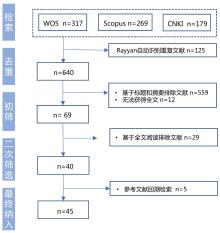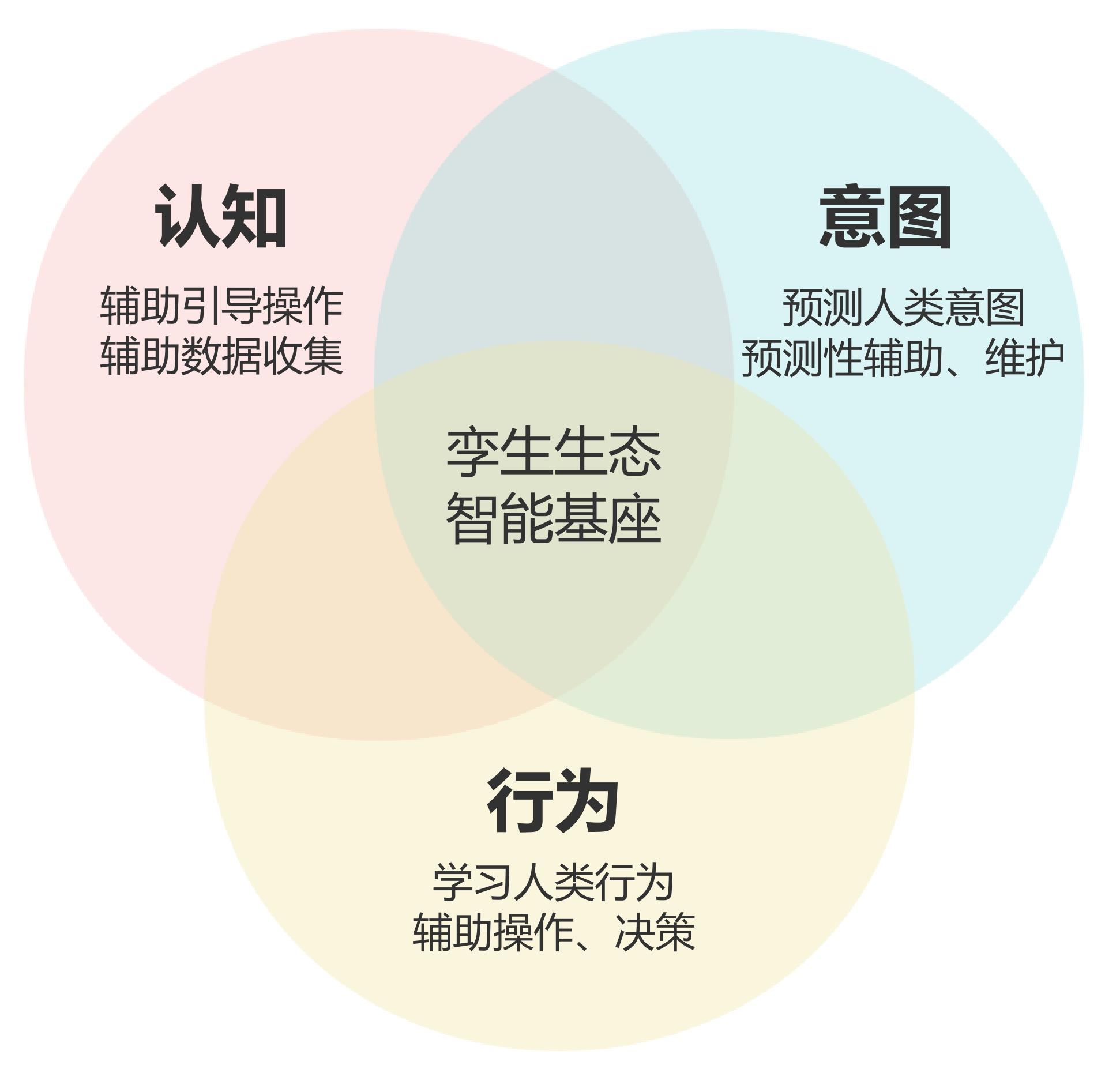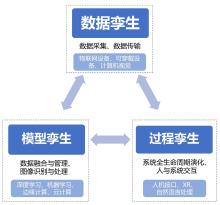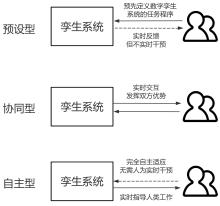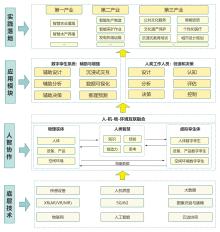
农业图书情报学报 ›› 2024, Vol. 36 ›› Issue (7): 4-18.doi: 10.13998/j.cnki.issn1002-1248.24-0450
• 特约文章 • 下一篇
数字孪生生态中的人智协作:价值定位、关键技术与实践进路
白芳睿1,2, 梁少博1,3, 吴丹1,3( ), 任昱衡4, 杨帆4
), 任昱衡4, 杨帆4
- 1. 武汉大学 信息管理学院,武汉 430072
2. 武汉大学 图书情报国家级实验教学示范中心,武汉 430072
3. 武汉大学 人机交互与用户行为研究中心,武汉 430072
4. 厦门鲲鹭物联信息技术有限公司,厦门 361000
-
收稿日期:2024-06-09出版日期:2024-07-05发布日期:2024-11-26 -
通讯作者:吴丹 -
作者简介:白芳睿(2001- ),女,硕士研究生,研究方向为信息检索、用户信息行为
梁少博(1992- ),男,博士,副教授,研究方向为用户信息行为、人机交互
任昱衡(1985- ),男,博士,教授,研究方向为区块链、物联网、数字化转型
杨帆(1977- ),男,学士,研究方向为数字孪生、数字化转型
-
基金资助:国家自然科学基金重大研究计划培育项目“人机交互视角下数据与知识双驱动的可解释智能决策方法研究”(92370112); 湖北省自然科学基金创新群体项目“以人为本的人工智能创新应用”(2023AFA012)
Human-Intelligent Information System Collaboration in Digital Twin Environment: Value Proposition, Key Technologies, and Practical Approaches
Fangrui BAI1,2, Shaobo LIANG1,3, Dan WU1,3( ), Yuheng REN4, Fan YANG4
), Yuheng REN4, Fan YANG4
- 1. School of Information Management, Wuhan University, Wuhan 430072
2. National Demonstration Center for Experimental Library and Information Science Education, Wuhan 430072
3. Center for Studies of Human-Computer Interaction and User Behavior, Wuhan University, Wuhan 430072
4. Xiamen Kunlu IoT Information Technology Co. , Ltd, Xiamen 361000
-
Received:2024-06-09Online:2024-07-05Published:2024-11-26 -
Contact:Dan WU
摘要:
[目的/意义] 本研究深入研究数字孪生中的人智协作,为数字孪生进一步赋能社会数智化发展提供建议,使人机交互和协作进一步深化、向人机共融迈进。 [方法/过程] 本研究使用系统性文献综述方法,聚焦人与数字孪生系统的协作,从价值定位、关键技术和实践应用等层面梳理了国内外45篇重点文献。 [结果/结论] 研究表明,人与数字孪生系统在整个生态中具备不同的独特价值、人工智能技术发挥着基座作用;数据孪生、模型孪生和过程孪生等孪生模块中支撑人智协作的关键技术类型不完全一致但相互协同;国内外数字孪生人智协作在工业、医疗保健、智慧城市和公共文化服务领域具有丰富的实践应用;研究最后提出了孪生共智协作方式与整体框架,总结了当前阻碍与发展策略。
中图分类号: TP391.9,G203
引用本文
白芳睿, 梁少博, 吴丹, 任昱衡, 杨帆. 数字孪生生态中的人智协作:价值定位、关键技术与实践进路[J]. 农业图书情报学报, 2024, 36(7): 4-18.
Fangrui BAI, Shaobo LIANG, Dan WU, Yuheng REN, Fan YANG. Human-Intelligent Information System Collaboration in Digital Twin Environment: Value Proposition, Key Technologies, and Practical Approaches[J]. Journal of Library and Information Science in Agriculture, 2024, 36(7): 4-18.
表1
数据库检索式"
| 数据库 | 检索式 | 检索结果/篇 |
|---|---|---|
| WOS核心集 | TS=(digital twin) AND (TS=((AI) OR (artificial intelligence))) AND (TS=((human-computer collaboration) OR (user))) | 317 |
| Scopus | (TITLE-ABS-KEY ("digital twin") AND TITLE-ABS-KEY ("AI" OR " artificial intelligence") AND TITLE-ABS-KEY ("HCI" OR " human-computer collaboration " OR "user")) | 269 |
| CNKI | (TKA%='数字孪生') AND TKA%=('人机协作'+'用户') AND TKA%=('人智协作'+'人工智能'+'协同智能') | 179 |
| 1 |
|
| 2 |
|
| 3 |
|
| 4 |
|
| 5 |
吴江, 曹喆, 陈佩, 等. 元宇宙视域下的用户信息行为: 框架与展望[J]. 信息资源管理学报, 2022, 12(1): 4-20.
|
|
|
|
| 6 |
陶飞, 刘蔚然, 张萌, 等. 数字孪生五维模型及十大领域应用[J]. 计算机集成制造系统, 2019, 25(1): 1-18.
|
|
|
|
| 7 |
|
| 8 |
|
| 9 |
|
| 10 |
|
| 11 |
|
| 12 |
庄存波, 刘检华, 熊辉, 等. 产品数字孪生体的内涵、体系结构及其发展趋势[J]. 计算机集成制造系统, 2017, 23(4): 753-768.
|
|
|
|
| 13 |
陶飞, 张贺, 戚庆林, 等. 数字孪生模型构建理论及应用[J]. 计算机集成制造系统, 2021, 27(1): 1-15.
|
|
|
|
| 14 |
|
| 15 |
陶飞, 程颖, 程江峰, 等. 数字孪生车间信息物理融合理论与技术[J]. 计算机集成制造系统, 2017, 23(8): 1603-1611.
|
|
|
|
| 16 |
张辰源, 陶飞. 数字孪生模型评价指标体系[J]. 计算机集成制造系统, 2021, 27(8): 2171-2186.
|
|
|
|
| 17 |
王昊琪, 李浩, 文笑雨, 等. 基于数字孪生的产品设计过程和工作量预测方法[J]. 计算机集成制造系统, 2022, 28(1): 17-30.
|
|
|
|
| 18 |
李浩, 陶飞, 王昊琪, 等. 基于数字孪生的复杂产品设计制造一体化开发框架与关键技术[J]. 计算机集成制造系统, 2019, 25(6): 1320-1336.
|
|
|
|
| 19 |
|
| 20 |
|
| 21 |
|
| 22 |
李海峰. 中美数字孪生研究主题的比较分析——兼论基于结构话题模型的文献主题数据挖掘方法[J]. 情报杂志, 2022, 41(1): 156-163.
|
|
|
|
| 23 |
陶飞, 张萌, 程江峰, 等. 数字孪生车间——一种未来车间运行新模式[J]. 计算机集成制造系统, 2017, 23(1): 1-9.
|
|
|
|
| 24 |
苗田, 张旭, 熊辉, 等. 数字孪生技术在产品生命周期中的应用与展望[J]. 计算机集成制造系统, 2019, 25(6): 1546-1558.
|
|
|
|
| 25 |
秦晓珠, 张兴旺. 数字孪生技术在物质文化遗产数字化建设中的应用[J]. 情报资料工作, 2018, 39(2): 103-111.
|
|
|
|
| 26 |
李浩, 刘根, 文笑雨, 等. 面向人机交互的数字孪生系统工业安全控制体系与关键技术[J]. 计算机集成制造系统, 2021, 27(2): 374-389.
|
|
|
|
| 27 |
杨赓, 周慧颖, 王柏村. 数字孪生驱动的智能人机协作: 理论、技术与应用[J]. 机械工程学报, 2022, 58(18): 279-291.
|
|
|
|
| 28 |
|
| 29 |
|
| 30 |
|
| 31 |
|
| 32 |
姜婷婷, 陈佩龙, 许艳闰. 国外心流理论应用研究进展[J]. 信息资源管理学报, 2021, 11(5): 4-16.
|
|
|
|
| 33 |
张斌. 开源情报对国家情报工作制度创新的影响: 基于系统性文献综述视角[J]. 信息资源管理学报, 2021, 11(4): 60-69.
|
|
|
|
| 34 |
|
| 35 |
|
| 36 |
王秉, 徐方廷, 曹春秀. 孪生应急: 数字孪生赋能应急管理的新范式[J]. 情报杂志, 2023, 42(11): 147-152.
|
|
|
|
| 37 |
|
| 38 |
|
| 39 |
|
| 40 |
|
| 41 |
|
| 42 |
|
| 43 |
肖飞, 张为华, 王东辉, 等. 数字孪生驱动的固体发动机总体设计体系架构与应用[J]. 计算机集成制造系统, 2019, 25(6): 1405-1418.
|
|
|
|
| 44 |
|
| 45 |
|
| 46 |
|
| 47 |
|
| 48 |
杨晓楠, 房浩楠, 李建国, 等. 智能制造中的人-信息-物理系统协同的人因工程[J]. 中国机械工程, 2023, 34(14): 1710-1722, 1740.
|
|
|
|
| 49 |
|
| 50 |
|
| 51 |
胡慧娟, 王明帮, 雷崎方, 等. 数字孪生医院: 改变医疗的未来[J]. 生物医学工程学杂志, 2024, 41(2): 376-382.
|
|
|
|
| 52 |
|
| 53 |
|
| 54 |
|
| 55 |
张捷, 钱虹, 周宏远. 数字孪生技术在社区老年人安全健康监测领域的应用探究[J]. 中国医疗器械杂志, 2019, 43(6): 410-413, 421.
|
|
|
|
| 56 |
|
| 57 |
|
| 58 |
朱惠斌. 国内外数字孪生技术研究进展与实践展望[J]. 信息通信技术, 2022, 16(5): 75-80.
|
|
|
|
| 59 |
|
| 60 |
任萍萍. 5G技术驱动下的智慧图书馆应用场景与智慧平台模型构建[J]. 情报理论与实践, 2020, 43(7): 95-102.
|
|
|
|
| 61 |
石晶, 李红宇, 刘佳. 基于通用人工智能的公共图书馆服务的优化与创新[J]. 图书馆建设, 2024(2): 94-101.
|
|
|
|
| 62 |
石婷婷, 徐建华, 张雨浓. 数字孪生技术驱动下的智慧图书馆应用场景与体系架构设计[J]. 情报理论与实践, 2021, 44(3): 149-156.
|
|
|
|
| 63 |
|
| [1] | 张何灿, 易成岐, 郭鹏, 黄倩倩, 靳晓锟. 高质量AI数据体系面临的数据版权困境、应对策略解析与实施路径研究[J]. 农业图书情报学报, 2024, 36(9): 32-43. |
| [2] | 罗学妹, 林予哲. AIGC驱动下研究生数字素养教育提升路径探索[J]. 农业图书情报学报, 2024, 36(9): 70-77. |
| [3] | 袁帆, 李佳. 生成式人工智能在图书馆信息素养教育中的机遇、挑战与发展方向——一项范围综述[J]. 农业图书情报学报, 2024, 36(9): 44-57. |
| [4] | 刘琼, 刘星, 刘桂锋. “人工智能+高等教育”应用场景下的AI素养框架研究[J]. 农业图书情报学报, 2024, 36(8): 43-55. |
| [5] | 王树义, 曾雯, 张为师, 李俊洁. 知识工作者AI素养差距的AI技术弥补手段研究[J]. 农业图书情报学报, 2024, 36(8): 20-33. |
| [6] | 李华明. 机遇与挑战:ChatGPT赋能图书馆知识服务中的应用研究[J]. 农业图书情报学报, 2024, 36(8): 96-105. |
| [7] | 李白杨, 孙榕. 基于“知识-技能”导航的人工智能素养通识教育课程构建[J]. 农业图书情报学报, 2024, 36(8): 34-42. |
| [8] | 吴丹, 孙昕玦. 以人为本的人工智能素养教育探究:UNESCO教师和学生人工智能能力框架的解读与启示[J]. 农业图书情报学报, 2024, 36(8): 4-19. |
| [9] | 胡安琪, 吉顺权. 政策工具视角下中国人工智能技术产业高质量发展驱动路径研究[J]. 农业图书情报学报, 2024, 36(7): 50-62. |
| [10] | 刘佳. 基于生成式人工智能的智能图书馆服务创新与风险规避[J]. 农业图书情报学报, 2024, 36(7): 63-75. |
| [11] | 李默, 杨彬. 从生成式人工智能到通用人工智能:赋能图书馆知识服务模式创新[J]. 农业图书情报学报, 2024, 36(6): 50-61. |
| [12] | 张晓林. 超越资源、超越技术、超越自我——用知识服务生产关系改革创新推动知识服务新质生产力发展[J]. 农业图书情报学报, 2024, 36(6): 4-15. |
| [13] | 彭丽徽, 张琼, 李天一. 人工智能嵌入政府数据治理的算法歧视风险及其防控策略研究[J]. 农业图书情报学报, 2024, 36(5): 23-31. |
| [14] | 罗国锋, 刘清生. ChatGPT赋能高校信息素养教育应用场景与实践研究[J]. 农业图书情报学报, 2024, 36(4): 91-101. |
| [15] | 李猛力, 王颖, 钱力, 谢靖, 常志军, 贾海青. 面向新质生产力发展的科技人才数据底座建设[J]. 农业图书情报学报, 2024, 36(2): 15-25. |
|
||

